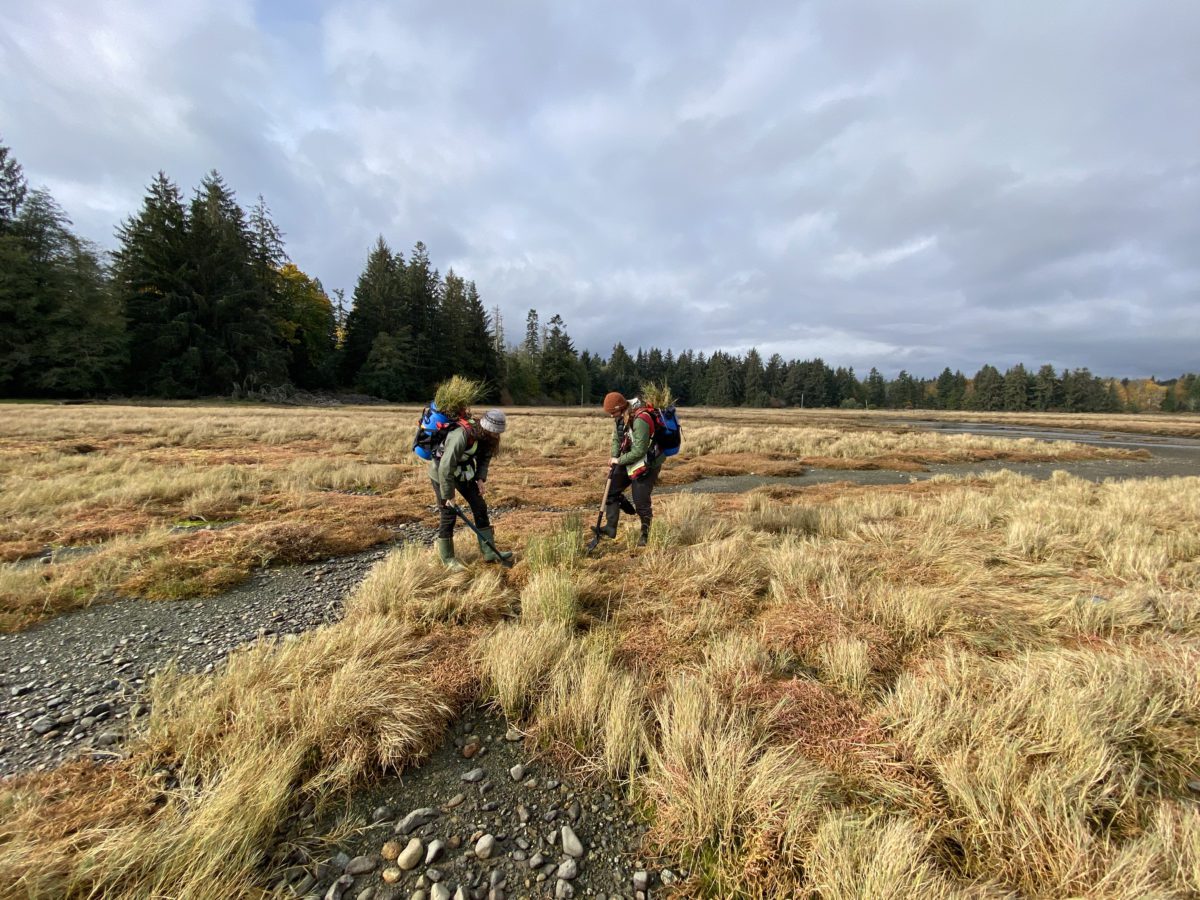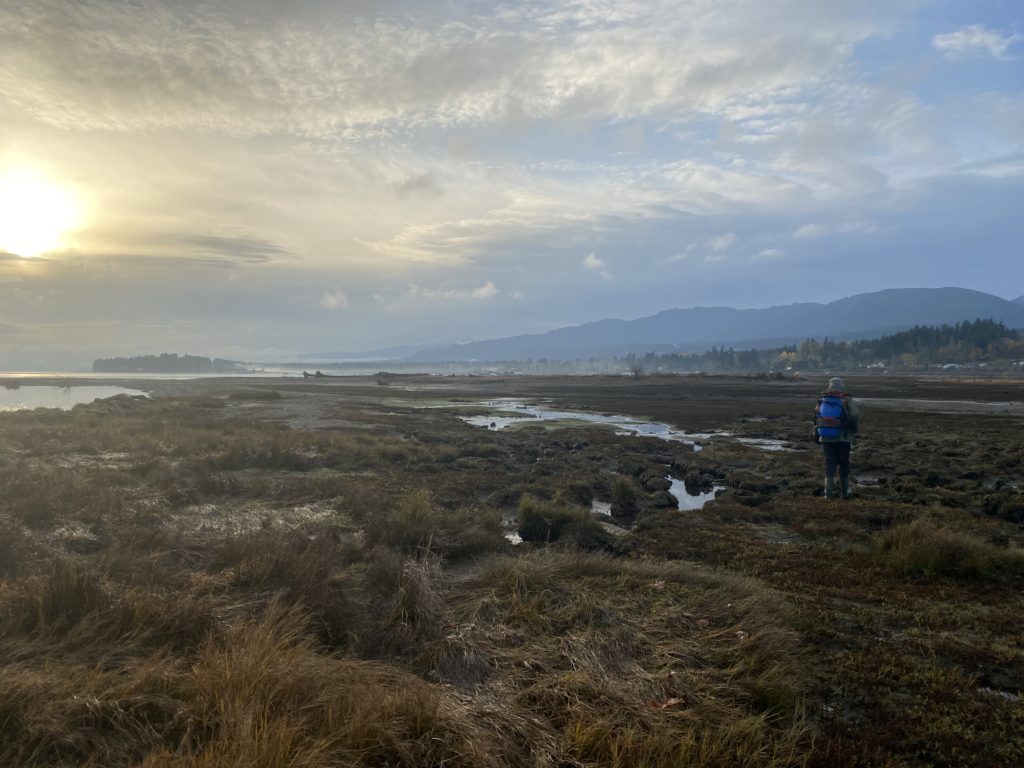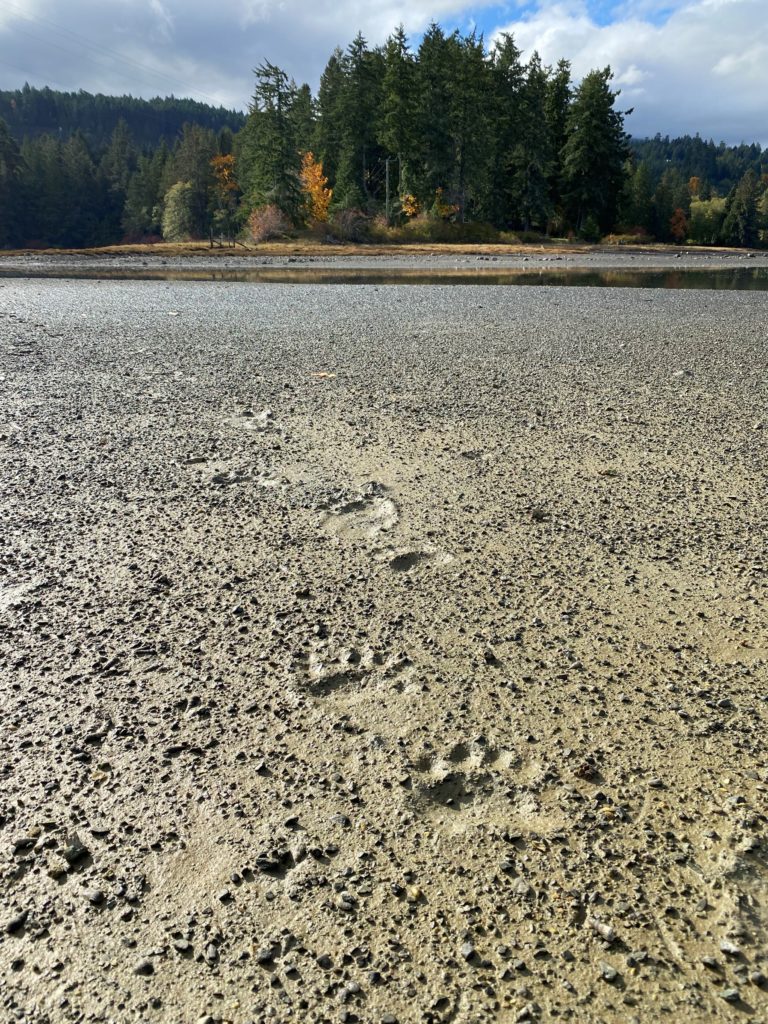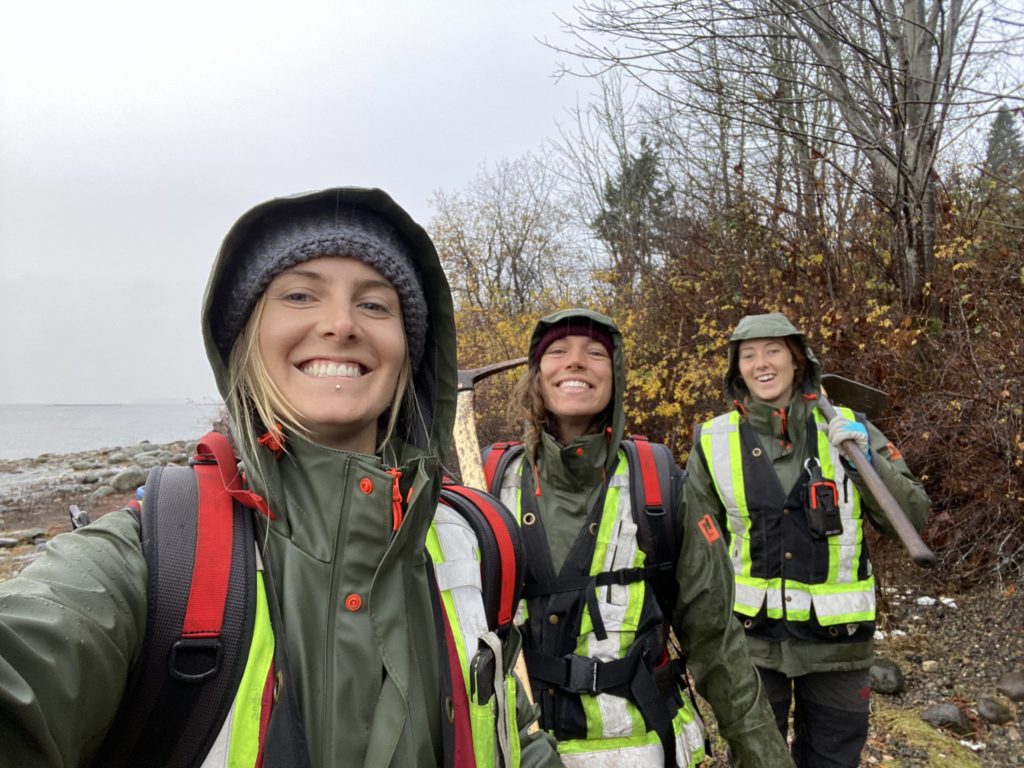
This story comes to us from Sylvie Hawkes, a Conservation Field Technician with the West Coast Conservation Land Management Program.
Over the past few months, the West Coast Conservation Crew has traversed kilometers of Vancouver Island coastline, through pebble beaches, salt marshes and estuaries, to map and remove invasive Spartina plants. With pick-axes in their hands and barrel containers on their backs, the Crew walked a combined 105 km of coastline to ensure that not a single Spartina plant was missed. Sometimes starting at 6AM to beat the tide, often bushwhacking to access sites and almost always getting stuck in mud, the Crew members have been dedicated to beating back the tide of these invasive species.

Spartina is a genus of grass, known commonly as Cordgrass, that thrives in salt marsh ecosystems. There are several species of Spartina, but on Vancouver Island the focus is on two invasive types: Spartina densiflora, originally from South America, and Spartina patens, from the east coast of North America.
The biggest problem with these species is how effectively and uniformly they spread. They create dense mat-like coverage in the high intertidal zone, pushing out native species and disrupting the natural movement of water and sediment. This means less space for not only native salt marsh plants, but also shellfish and anything that relies on these native species for food or shelter. Spartina is impacting critical habitat for many organisms from crustaceans and bivalves to waterfowl and juvenile salmon.
Spartina is especially effective at taking over habitat because of its ability to reproduce through both seeds and rhizomes (essentially the underground stems). Seeds that have fallen can be dispersed by water, allowing Spartina to spread over larger areas. The Crew has to return to the same shoreline every year to remove Spartina because any rhizome fragments or seeds that have already fallen are able to grow into new plants.

The West Coast Conservation Land Management Program (WCCLMP) is part of the BC Spartina Working Group, a partnership of conservation groups and government organizations working to detect and eradicate invasive Cordgrass species from the West Coast of British Columbia. Together, they have conducted in depth surveys and removals of Spartina along the beaches of Vancouver Island’s east coast. Over the past several months, the West Coast Conservation Crew walked the entire length of shoreline between Deep Bay and Comox with the goal of mapping all patens and removing all densiflora. Spartina patens is so successful at growing and spreading that, unlike densiflora, it has become too much of a challenge to remove manually. It has taken over vast areas and the BC Spartina Working Group is working on more effective strategies to remove it.

Along their way the Crew has found countless species of salmon moving through estuaries, eagles patiently waiting for those salmon to finish their journey, folks making their living tending shellfish, prints of black bears through the silt and countless other examples of why this habitat is so critical to protect.

